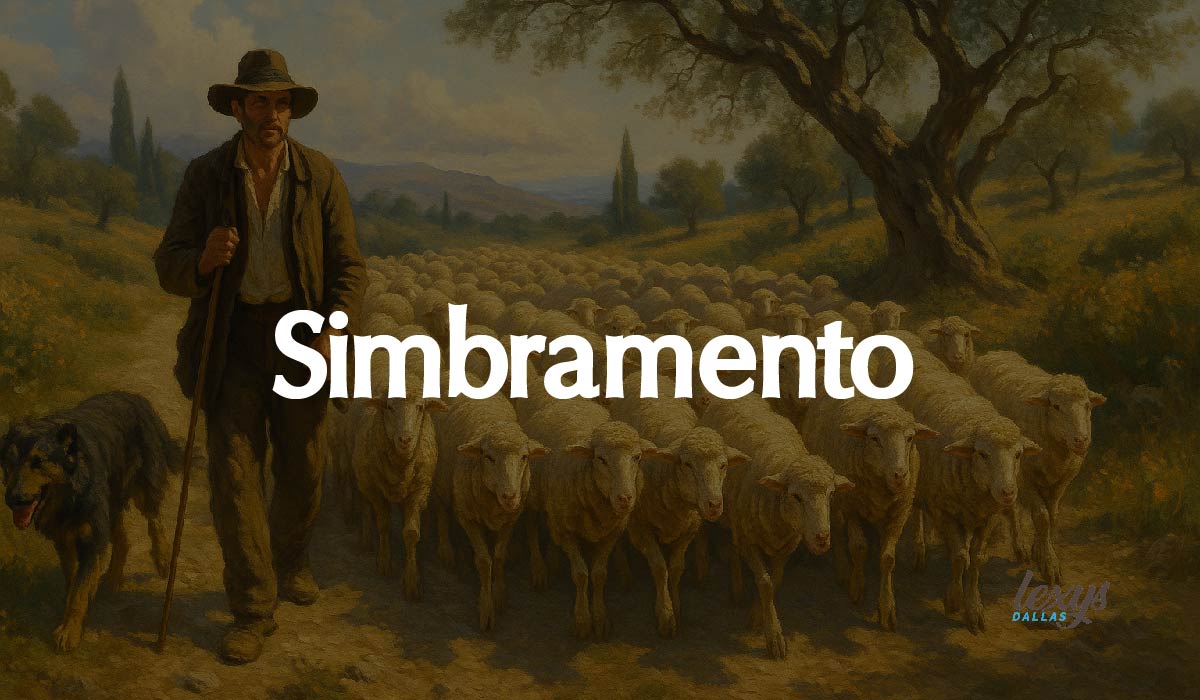Simbramento is a term that may not be familiar to many, yet its roots run deep in sustainable agriculture and ecological balance. This ancient practice connects humans, animals, and the land in a harmonious dance of coexistence. As we face increasing environmental challenges today, revisiting traditions like Simbramento could provide vital solutions for our planet’s future. Join us on this journey to explore how embracing this often-forgotten tradition can reshape our relationship with nature, fostering sustainability and community resilience.
What Is Simbramento?
Simbramento is a traditional practice rooted in the pastoral cultures of Southern Europe. It involves the seasonal movement of livestock across agricultural landscapes, allowing animals to graze and fertilize land naturally. This method fosters a dynamic connection between grazing patterns and crop cycles.
Historically, Simbramento has encouraged biodiversity by maintaining diverse flora and fauna within these ecosystems. Livestock play a crucial role in maintaining soil health and promoting nutrient cycling.
Today, this age-old technique is being rediscovered as a powerful tool for sustainable agriculture. By reestablishing these practices, we can bridge ancient knowledge with modern ecological needs.
A Living Link Between Humans, Animals, and Landscape
Simbramento creates a unique bond among humans, animals, and the landscape. This traditional practice encourages harmonious coexistence, where each element plays a vital role in sustaining life.
Farmers manage livestock alongside crops, fostering relationships that enhance biodiversity. Animals contribute to soil health while benefiting from grazing on a diverse range of plants.
This interconnectedness enriches both community and environment. By respecting local ecosystems and embracing ancient knowledge, Simbramento cultivates resilience against modern challenges. It highlights the importance of maintaining these age-old practices as we navigate our ever-changing world.
Why Simbramento Still Matters in the 21st Century
Simbramento remains relevant today as it fosters a deep connection between humans, animals, and the landscape. This ancient practice emphasizes harmony with nature, promoting sustainable farming techniques that can counteract modern agricultural issues.
In an age dominated by industrialization, Simbramento offers an alternative approach focused on environmental stewardship. It encourages biodiversity and soil health while preserving traditional knowledge passed down through generations.
Additionally, this method supports local communities by maintaining cultural heritage. As consumers increasingly seek ethical and sustainable food sources, embracing Simbramento could be vital for both our environment and socio-economic stability in the 21st Century.
Simbramento and the Revival of Slow Agriculture
Simbramento embodies the principles of slow agriculture, emphasizing patience and respect for natural cycles. This method encourages farmers to work in harmony with their environment rather than against it. By prioritizing traditional farming techniques, Simbramento fosters a deeper connection between people and the land.
As consumers increasingly seek sustainable food sources, this forgotten practice is making a comeback. It promotes small-scale farming while reducing dependency on industrialized agricultural methods. The revival of Simbramento underscores an essential shift toward valuing quality over quantity in our food systems.
This approach not only nurtures healthier crops but also creates resilient communities committed to preserving their heritage and landscapes.
The Benefits of Simbramento
Simbramento offers numerous benefits that extend beyond its cultural significance. This traditional practice fosters an environmentally friendly approach to agriculture, promoting soil health and reducing dependency on chemical inputs.
Additionally, it plays a vital role in preserving biodiversity. By integrating livestock with crops, Simbramento promotes diverse ecosystems that support a range of species.
The economic advantages are also noteworthy. It sustains local economies by encouraging small-scale farming and maintaining heritage practices that connect communities to their land and traditions.
It’s Environmentally Friendly
Simbramento is inherently environmentally friendly, promoting a sustainable relationship between agriculture and the natural environment. By integrating livestock grazing with crop cultivation, it minimizes the need for chemical fertilizers and pesticides. This reduces harmful runoff into waterways.
The practice encourages natural nutrient cycling through the use of animal manure, enriching the soil without the need for synthetic inputs. Healthier soil leads to increased carbon sequestration, which combats climate change.
Moreover, Simbramento fosters diverse ecosystems by maintaining a variety of habitats that support a wide range of wildlife. This biodiversity contributes to a more resilient agricultural system capable of adapting to environmental shifts and challenges in an era of climate uncertainty.
It Preserves Biodiversity
Simbramento plays a crucial role in preserving biodiversity. This traditional practice promotes the coexistence of diverse plant and animal species, fostering balanced ecosystems. By integrating livestock with crop cultivation, it fosters nutrient cycling and enhances soil health.
The varied landscapes maintained through Simbramento provide habitats for numerous wildlife species. These diverse environments support pollinators, birds, and beneficial insects essential for agricultural productivity.
Moreover, maintaining local flora ensures that rare plants don’t vanish from our landscapes. Such diversity not only enriches our natural heritage but also strengthens ecological resilience against diseases and pests.
It Sustains Local Economies and Heritage
Simbramento fosters local economies by promoting traditional practices and products. Farmers often sell their goods directly to consumers, keeping profits within the community. This direct market approach strengthens local ties.
Additionally, Simbramento celebrates cultural heritage through its age-old techniques. The knowledge passed down through generations preserves not just agricultural methods but also community identities.
Tourism can also benefit from this tradition. Visitors are drawn to experience authentic farming practices and engage with local culture, further enhancing economic opportunities for communities steeped in Simbramento traditions.
It Offers Resilience Against Climate Change
Simbramento fosters a diverse ecosystem, making agricultural systems more resilient to climate change. Integrating livestock with crop production enhances soil health and reduces erosion. This synergy enables farms to adapt more effectively to erratic weather patterns.
Additionally, the traditional practices of Simbramento promote agroecological techniques that improve water retention in the soil. Healthier soils can withstand droughts and heavy rainfall more effectively.
Moreover, this approach encourages biodiversity by preserving native species and habitats. As these ecosystems thrive, they enhance carbon sequestration, helping to mitigate the impacts of climate change while maintaining productive landscapes for future generations.
How to Support or Participate in Simbramento
To support Simbramento, start by educating yourself about its principles and practices. Read books or articles focusing on the tradition and its ecological benefits. Engaging in discussions can spread awareness.
Consider visiting regions where Simbramento is practiced. Experience local farms firsthand, and talk to farmers about their methods. This interaction fosters appreciation for sustainable farming.
You can also buy products from farms that implement Simbramento techniques. By choosing these goods, you directly contribute to preserving this invaluable tradition while supporting local economies and the ecosystems that sustain them.
In Closing: Simbramento Is Not Just a Word—It’s a Way of Life
Simbramento is more than just a tradition; it embodies a philosophy that connects people, animals, and the landscape. As we face pressing environmental challenges, this age-old practice offers insights into sustainable living. Embracing Simbramento can nurture our ecosystem while honoring cultural heritage.
By promoting biodiversity and supporting local economies, Simbramento helps pave the way for resilient agricultural practices that mitigate the impacts of climate change. It invites us to slow down and appreciate the interconnectedness of life around us.
Engaging with Simbramento means actively participating in a lifestyle that values sustainability over convenience. This forgotten tradition holds powerful lessons for modern society as we seek solutions to pressing global issues.

